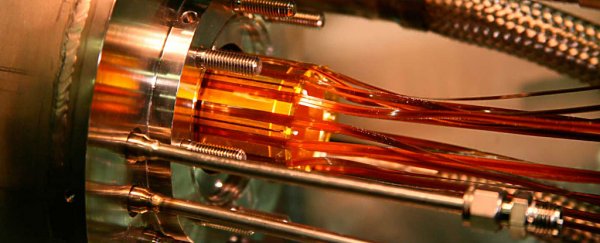After two decades of trying, physicists at CERN have reported the first ever measurement of the light emitted by an antimatter atom, revealing that antihydrogen is the exact mirror image of regular hydrogen.
The result, which finally confirms what has long been predicted by the laws of physics, opens up a new way of testing Einstein's special theory of relativity, and could help us answer one of the biggest mysteries in modern physics - why is there so much more regular matter than antimatter in the Universe?
"This represents a historic point in the decades-long efforts to create antimatter and compare its properties to those of matter," theoretical physicist Alan Kostelecky from Indiana University, who was not involved in the study, told NPR.
If you're not familiar with the whole "Where is all the antimatter?" problem in physics, here's some background info.
The law of physics predicts that for every particle of regular matter, there's an antiparticle. So for every negatively-charged electron, there's a positively charged positron.
That means for every regular hydrogen atom, there's an antihydrogen atom, and just as a hydrogen atom is made up of an electron bound to a proton, an antihydrogen atom is made up of an antielectron (or positron) bound to an antiproton.
If an antiparticle happens to find a regular particle, they will cancel each other out, releasing energy in the form of light.
This fact creates two rather hefty problems. The first is that because there's so much regular matter in the Universe, it's virtually impossible for physicists to find antimatter in nature, because it'll be annihilated before they even get the chance to start looking.
The second problem is why there's so much more regular matter than antimatter - if our current physics models suggest that an equal amount of regular particles and antiparticles were produced by the Big Bang, shouldn't everything in the Universe have cancelled itself out?
"Something happened, some small asymmetry that led some of the matter to survive, and we simply have no good idea that explains that right now," says one of the team, Jeffrey Hangst, from the ALPHA experiment at CERN in Switzerland.
That might all be about to change though, because for the first time, scientists have been able to measure the kind of light given off by an antihydrogen atom when hit by a laser, and compare that with the light given off by a regular hydrogen atom.
That might not sound like much, but it's the first time we've been able to control an antihydrogen atom long enough to directly measure its behaviour, and compare it to its regular hydrogen counterpart.
"Using a laser to observe a transition in antihydrogen and comparing it to hydrogen to see if they obey the same laws of physics has always been a key goal of antimatter research," Hangst said in a press statement.
Because it's impossible to find an antihydrogen particle in nature - seeing as hydrogen is the most abundant element in the Universe, so easily cancels out any lurking antihydrogens - scientists need to produce their own anti-hydrogen atoms.
Over the past 20 years, the ALPHA team has been figuring out how to produce enough of these antihydrogen atoms to actually get a chance to work with them, and have finally come up with a technique that allows them to create about 25,000 antihydrogen atoms every 15 minutes, and trap around 14 of them.
Previous methods could only ever trap 1.2 antihydrogen atoms per 15 minutes.
These trapped particles would then be blasted by laser light to force their positrons to 'jump' from a lower energy level to a higher one. As the positrons returned to the lower energy level, the light amount that's released can be measured.
The team found that the antihydrogen atom emitted the exact same light spectrum as regular hydrogen atoms put through the same test.
"It's long been thought that antimatter is an exact reflection of matter, and we are gathering evidence to show that is indeed true," Tim Tharp from ALPHA told Ryan F. Mandelbaum at Gizmodo.
This result is consistent with the Standard Model of particle physics, which predicts that hydrogen and antihydrogen will have identical light-emitting characteristics, but now physicists have the chance to test even more spectra emissions by using different types of lasers.
If they all end up identical, Einstein's special relatively lives for another day, as Adrian Cho explains for Nature:
"Explaining exactly why special relativity requires antimatter to mirror matter involves a lot of math. But in a nutshell, if that mirror relationship were not exact, then the basic idea behind special relativity couldn't be exactly right.
Special relativity assumes that a single unified thing called spacetime splits differently into space and time for observers moving relative to each other. It posits that neither observer can say who is really moving and who is stationary. But, that can't be exactly right if matter and antimatter don't mirror each other."
But if matter and antimatter don't mirror each other - if antimatter doesn't obey the same laws of physics as regular matter - our models of the Big Bang will be flawed.
And that gives us the chance to rethink everything and figure out once and for all why matter escaped total annihilation in the Universe and allowed us and everything else to exist.
We're obviously getting ahead of ourselves here, but these are the kinds of possibilities this experiment has opened up, and it's really exciting stuff.
"We're kind of really overjoyed to finally be able to say we have done this," Hangst told NPR. "For us, it's a really big deal."
The research has been published in Nature.
